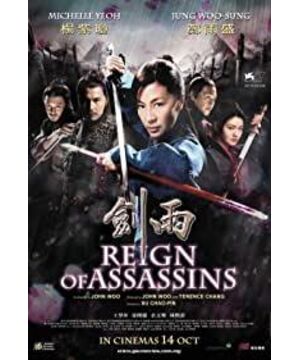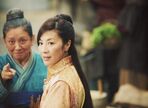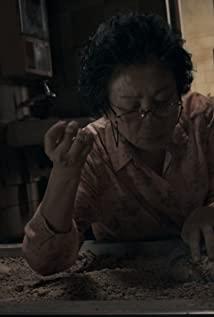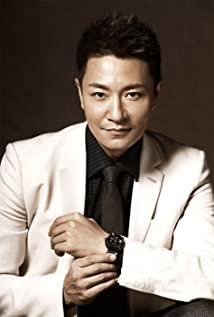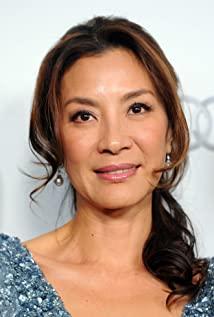As a film that is both "Wu Yusen's Work" and "Su Zhaobin Movie", if we ignore the entanglements behind the film, as far as the movie "Sword Rain" is concerned, it can be said to be a successor to "Crouching Tiger, Hidden Dragon". "The best Chinese martial arts film since.
As far as the story is concerned, "Sword Rain" can be said to be an ancient costume martial arts version of "Change Face", so the "Wu Yusen Works" marked in the final subtitles of the film is also well-known. However, from the perspective of the overall style of the film, as the director of "Will Silk" and the screenwriter of "Double Pupils", director Su Zhaobin still left his own style in "Sword Rain", "Sword Rain" is still a well-deserved movie. Su Zhaobin movie".
As a martial arts film, "Sword Rain" not only maintains a high level of traditional action scenes, but also creates a new path for the narrative transformation of Chinese martial arts films in terms of the structure and characterization of the drama. As a film genre that has developed almost at the same time as Chinese films, martial arts films are as important to Chinese films as Western films are to American films. If Chinese movies have a movie myth of their own, then martial arts movies are the type that does my part.
Chinese martial arts films started from the earliest sword and fairy films. After decades of development, through the interaction of martial arts novels and martial arts movies, a set of basic narrative rules have been established very early, the main elements of which are jianghu, treasure hunting, and hegemony. , Revenge, strange love. By the 1960s and 1970s, as one of the important types of Hong Kong movies, martial arts films had reached the peak in narrative methods. The story modes created by martial arts classics such as "Golden Swallow", "Swordsman", and "One Armed Sword" continued until the beginning of this century without any fundamental changes.
Chinese martial arts movies have always had a congenital defect in the narrative structure, that is, the plot clues and the action scenes are out of touch with each other in the film narrative process, and they cannot help each other. The plot of most martial arts movies will come to a halt when it develops into an action scene, waiting for the two sides to complete the fighting scene, the film plot will continue to develop. Except for a few milestone martial arts films, martial arts movies as commercial genres have always been too dependent on selling visual spectacles. Therefore, the action scenes of martial arts films have been constantly innovating, but the progress in the story level is minimal.
Even in the two subtypes of Chinese martial arts movies (fisting martial arts and guns martial arts), this tendency to rely too much on the action scenes of visual spectacle and ignore the plot tension of the movie story itself has always existed. However, since such films have always been welcomed by audiences in the market, the innovation of martial arts films in the narrative structure has also been lacking motivation.
Domestic movie reviews once popularly divided the scenes in martial arts films and action films into two types, "wenxi" and "wuxi". In fact, this is a reflection of the audience's interest caused by the disconnect between the plot and the action. In this sense, "Crouching Tiger, Hidden Dragon" directed by Ang Lee in 2001 is indeed a revolutionary improvement on Chinese martial arts films. As a film that combines the classic Hollywood narrative mode and the traditional elements of Chinese martial arts films, all the action scenes in "Crouching Tiger, Hidden Dragon" directly participate in character creation and plot advancement. Although due to the limitation of the times, the film still contains the inherent traces of traditional martial arts films, but in terms of the overall style, "Crouching Tiger, Hidden Dragon" is indeed a periodical innovation of Chinese martial arts films.
The last wave of innovation in Chinese martial arts films was the new martial arts film headed by "New Dragon Inn" directed by Tsui Hark in 1992. However, the contribution of new martial arts films to traditional martial arts films lies more in the innovation of action rather than the innovation of narrative mode. The problem of film plot and action scenes being disconnected in the film narrative process is not in this wave of innovation in martial arts films. Get a fundamental solution. And if the essence of "Crouching Tiger, Hidden Dragon" directed by Ang Lee is in its essence, it is actually a far cry from the traditional concept of martial arts movies in terms of story type. But it is this distance that created a breakthrough in the narrative genre of martial arts films.
With the box office success of "Crouching Tiger, Hidden Dragon" and the recognition of the Oscars, Chinese movies have also set off a wave of martial arts films. However, from the beginning of "Hero" in 2001 to the end of "Night Banquet" in 2006, among many works, no martial arts film can really make substantial innovations in the narrative structure and technique of martial arts films.
In the martial arts film "Sword Rain", the combination of character, plot tension and action scenes can be said to be the most balanced of Chinese martial arts films in recent years. Even without the sword fighting scenes of those ancient costume knights in the film, this film can still attract the audience to pay attention to the fate of the characters in the film with its compact plot tension, and is moved by the emotional atmosphere created by the characters in the film. As a story that can be called "the ancient costume martial arts version of "Changing Face"" to some extent, "Sword Rain" combines the classic Hollywood narrative genre through a complex structure but clear clues story, combined with the narrative rules of traditional Chinese martial arts movies , Completed the inheritance and innovation of a Chinese martial arts movie.
As a martial arts genre film, the story of "Sword Rain" covers all the typical elements of martial arts films such as Jianghu, treasure hunting, battle for hegemony, revenge, and strange love. This is actually an innovation for Chinese martial arts films. Contending for hegemony, winning treasures, and the grievances and hatreds of the children of the rivers and lakes, while the three story lines are advancing simultaneously, the primary and the secondary are distinct, creating a compact story rhythm, the whole story is busy and not chaotic, and the emotional motivation and story power of all the characters It’s all clear and clear. While following the story on the screen, the audience can also penetrate into the emotional world of the movie characters. It can be said that it has surpassed the audience’s expectations for a martial arts genre, and satisfied another part of the audience for a good movie. The desire for movies: In a romantic and bizarre screen story, I touched my inner world.
(For those friends who are not satisfied with "Jianyu", I understand that you have higher tastes and requirements for movies, but please also consider the realistic level of Chinese movies. For people like me who watch 100 domestic movies every year Said, "Sword Rain" is undoubtedly an exciting Chinese movie.)
View more about Reign of Assassins reviews


